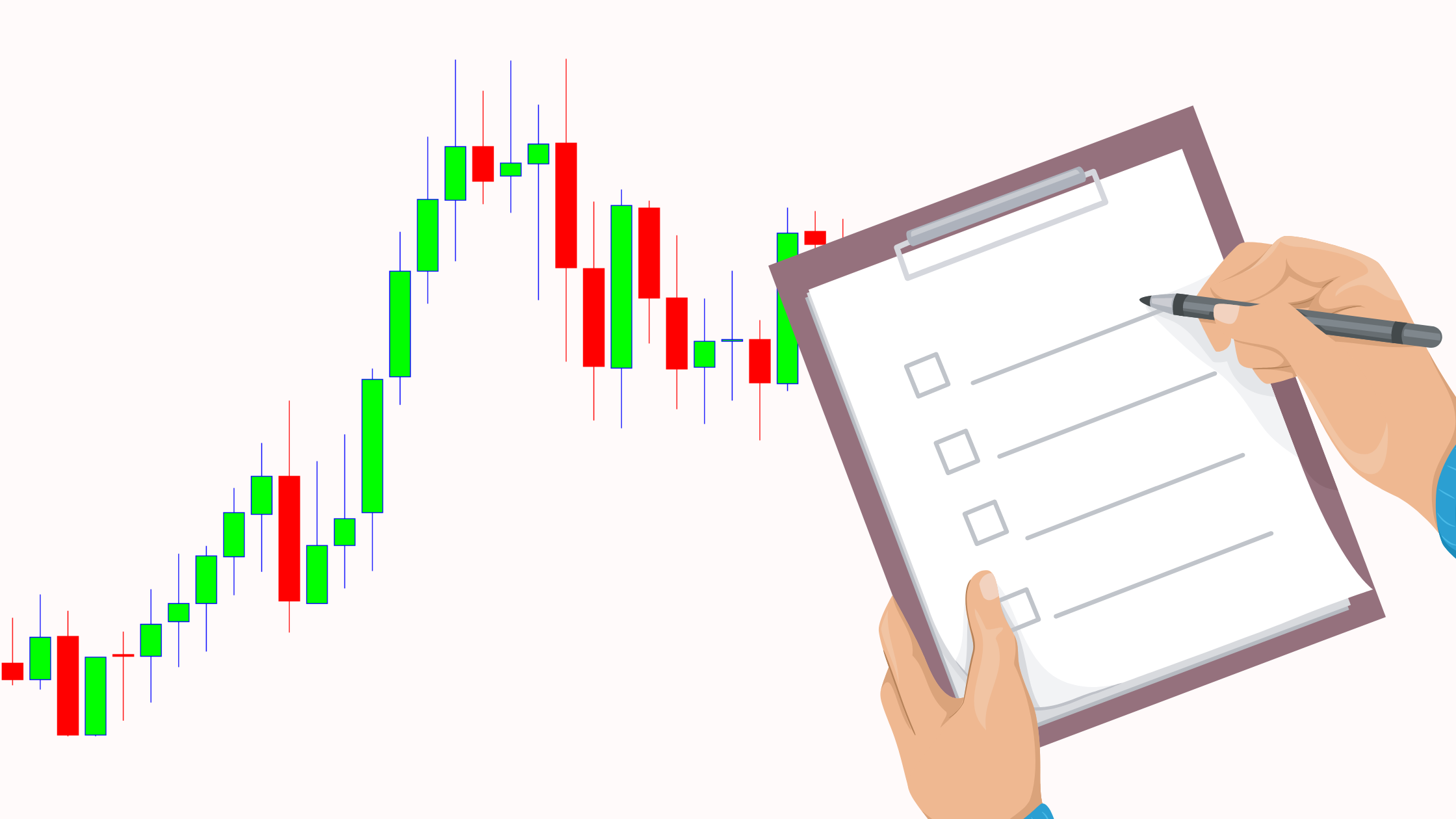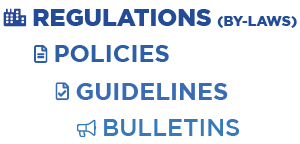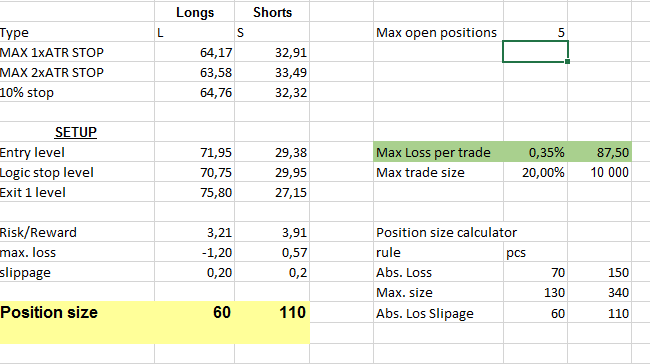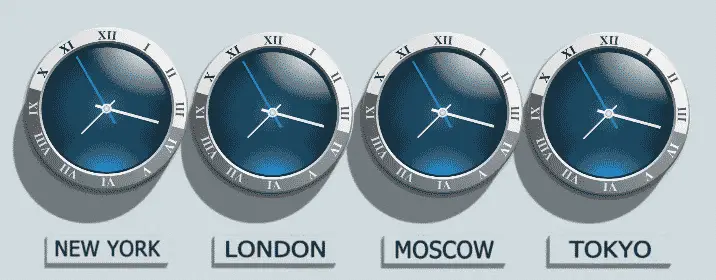Trading Plan Template Filetype%3apdf
The following pages contain detailed information on how to write a marketing plan for your business. Your marketing plan is a vital part of your overall business plan and strategy. Our hope is that this outline will help you think through aspects of your proposed business operations and the channels you. TRADING PLAN TEMPLATE ©TIM W ILCOX 2005 T RADING P LAN O VERVIEW 1. What is a Trading Plan? 1.1 A trading plan is a complete set of rules that covers every aspect of your trading life. Many experts refer to the need to have an ‘edge’ which will tip the balance of probabilities of success in your favour.
Trading Plan Outline
A trading plan is an outline successful traders use to keep focused on decisions with a high probability for profit. The trading plan also eliminates trading scenarios that do not meet your edge.
The outline consists of two core components:
- The trading system, method or process that defines your trading edge, which includes buy or sell signals.
- Money management and risk management parameters that match your skills and resources.
Finally your trading plan includes which markets (or securities) to trade, your goals, your emotional characteristics and then chooses a trading style.
Although not part of the trading plan itself, professional traders include a process for writing a trading journal [watch video].
Reviewing your performance represents a critical element of trading success ignored by most traders. Which is also why most traders never reach their full potential.
You can’t improve, or eliminate mistakes, if you don’t review your actions. Traders will always feel close to success, but never actually achieve financial independence without a structured process. The trading plan and the trading journal increase your odds of success.
- Getting Started: Creating an Export Business Plan 6. Maximizing the Worksheets. The worksheets provide the templates for developing your Export Business Plan, conducting business assessments. And foreign market research, creating your Marketing Plan, costing and sales projections, goal-setting, and more.
- Business Plan - Template Company Name (same as per Certificate of Incorporation) Detailed Company Ownership Structure (including all layers starting from Company name account being opened to intermediary company and up to beneficial owners’ level, together with% shareholdings) Does share capital in the ownership structure.
- Trading Plan Sample. I believe that Financial Markets are 100% psychologically driven. Price patterns are a reflection of the collective psychology of a large number of traders. Trading psychology also a major factor in my own trading. It is identified as my trading state.
Each of us brings unique goals, resources skills and education to the trading. We bring different capital, risk tolerance, personalities and emotions to trading. A well-thought trading plan gives you a document personally designed for success.
If you devote just 30 minutes per day for a week, in just seven days your trading plan transforms into an actionable trading process.
Let’s get started…

Trading Plan Components: Minimum Requirements

- Trading Concept: Defining Your Edge
- Objectives
- Trading System
- Money Management parameters
- Trade review
- Mindset
Outline Your Trading Plan Concept: Decisions for Your Strategy
- What is the philosophy/strategy/catalyst behind your trading ideas?
- Technical Analysis? News Driven? Long only? Momentum? Scalping? Intra day position?
- How active will you be? (Day trade or swing trade)
- What is your time frame for holding trades?
- How do you identify when your edge is no longer offering a sufficient risk/reward?
- How do you know when your edge is no longer valid?
Potential Trading Plan Concepts
- “Old-school” trend lines (yes they still work!)
- Moving averages:
1: Choose a duration for the moving average.
2: Will you use exponential or simple?
3: Will you use multiple moving averages?
4: Will you use multiple moving averages in multiple time frames?
- Stochastics or MACD as a trend filter
- Candlesticks but no moving averages. Many traders feel this is the truest sense of price action because they are not subjective.
- Will you trade long and short or only one? Many successful traders only look to one side of the market. This makes it easier to identify opportunity.
Be honest.

Admit we have limited resources.
Define your goals… Make Choice…Define Your Edge, and Document Why You Believe it’s a Solid Trading Strategy for You
Trading Plan Objectives
Forex Trading Plan Template
- Self analysis
- Defining personal objectives
- Trading Ideas
- Organizing your resources
Self Analysis
- How much time during the day can you devote to your game plan and to actual trading? (this will dictate your trading system)
- How many distractions can you expect to have?
- Can you focus for hours at a time or in short time frames?
- How much time can you devote to developing and improving your trading plan?
- What time of day do you plan on allocating to this “after market” work?
- When do you plan on doing your psychological work?
- Do you know what psychological work you need to do?
Self Analysis Pt. 2
- How would you rate your market knowledge?
- How would you rate your trading knowledge? How will you improve both of the above?
- How do you plan to assess progress?
- What are your psychological strengths and weaknesses in relation to developing your trading system? (specific to your trading concept)
- Strengths and weaknesses in terms of personal discipline that you will bring to your trading.
- Do you have emotional or financial issues that may affect your ability to focus or trade effectively or follow your plan?
Documenting Your Needs to Align with Your Tradng Goals Based on your analysis what do you need to:
- Learn-
- Schedule-
- Accomplish-
- Eliminate-
- Reduce-
- Solve-
–>> How will you accomplish the above? –>>
What are you currently doing? –>>
What specifically needs to change?
–>> Document your methods…
Outlining Your Trading System
1)What is your edge? What is the concept you are trading that you feel will earn money?
2)How will you “prove” this concept with real money? (paper trading is a waste for discretionary traders other than learning how to use a software correctly)
3)How much money do you have personally? How much can you afford to lose or invest in your trading business? This includes capital to trade and living expenses.
Trading Plan Template
4)How much risk can you afford to take on each trade, day, week and month?
5)How much money do you need to earn each year? Do you need to earn all of that from trading?
6)What if you don’t make enough from trading to live off of?

Day Trading Plan Template
7)What are your contingency plans and how will know you need to implement them?
Defining Personal Trading Objectives
- Can you make more money than you need to live off of so that your trading capital can grow?
- Based on the above are you being realistic or do you anticipate trading like a seasoned professional from the start?
- How will you educate yourself after you begin trading your system?
- How much do you expect to make as a percentage of your trading capital? (prop traders as well)
- Are you basing your expectations on hope or actual trading history?
- What risk level are you willing to accept to achieve that?
- What is the largest draw down you are willing to accept on a daily, weekly and monthly basis?
- How will you know your plan is working or not working? Who can you ask for advice or mentoring?
Trading Plan Formula: Filling in the Details of Your Plan
Trading Ideas:- What markets or stocks will you trade? What is the criteria? (2m, 1.5 ATR >20)
- What are the conditions necessary before you place a trade?
- How important is your initial entry? (Inexperienced traders do not understand the concept of scaling into a position and it costs them dearly)
- How do you identify the entry? (be specific) How important is re entry?
- How will you know if your idea is still valid?
- Based on your goals and capital resources, what will your initial risk be?(dollar wise and volatility wise)
- How do you plan to take profits? (trail, technical, targets) higher/lower/higher
- How do you determine position sizing?
- How will you review performance?
- Conditions that match your concept,
- Trade management, entries and exit scenarios.
- Money management parameters.
- Strategy points you in the right direction, the “real” reason to be in a trade.
- Set of rules and conditions that will get you in and out of the market
- Conditions define your edge
- Two sets of conditions: Idea generator, entry and exit scenarios (exits imply profit taking and or loss)
- Takes into consideration market/stock criteria
- Takes into consideration potential risk reward in relation to objectives and resources
- Volatility breakout, consolidation or trend reversal
- Time based, chart based, volatility based
- Chart based patterns: flag, channel breakout, significant chart level, wedge pattern, 1-2-3, moving average crossover, test of support or resistance
- *** must be very specific, not necessary to use all of them, know which ones you are comfortable trading (this includes considering initial risk)
- Initial stop loss: must be based on an acceptable dollar amount and volatility
- ** How to determine dollar amount?
- Break even: when do you move initial stop to break even?
- Adding to trades: How do you know you should build a position and when would you do it?
- ** this will all be documented and monitored in your game plan
- Re entry will be significant for shorter term ideas
- Wider stops for bigger targets (think swing trading)
- How will you know if you get stopped out if the idea is still valid?
- Are will you willing and ready to make the same trade multiple times taking small losses until it pays off?
- Two types: (very different thought processes!
- Exit into momentum scaling out and trading around a core position. (more active)
- Trailing a winning position and exiting on a predetermined pull back (less active requires patients for both setups and giving the trade time to play out)
- Trailing a winning position will create larger draw downs but bigger winners (must be OK with this)

- How much to risk per idea and per day.
- How will you determine position size?
- When would you increase risk (Broad market rally, obvious sector order flow, “A” trade, room to go)
- How many total positions will you trade at once and what % of your risk capital will that represent?
- Which profit taking strategy will you employ?